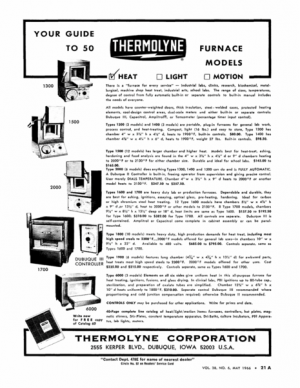- Joined
- Nov 16, 2012
- Messages
- 5,596
Ray can you add a shielding gas to the oven during a "heat" cycle that would help protect the elements and metal projects from oxidizing?
Yes. My ovens fill argon from the bottom and have an extension tube and valve at the top. During a heat, every 10 minutes or so, I push a little argon through the system. You don't need a constant flow; I found that's unnecessary. When done this way, the metal comes out with a bluish tint and no precipitated surface carbon flakes at all. Don't use CO2.
@ddickey: What is the name/model you have or at least the newer one if you don't know yours.
Regards


